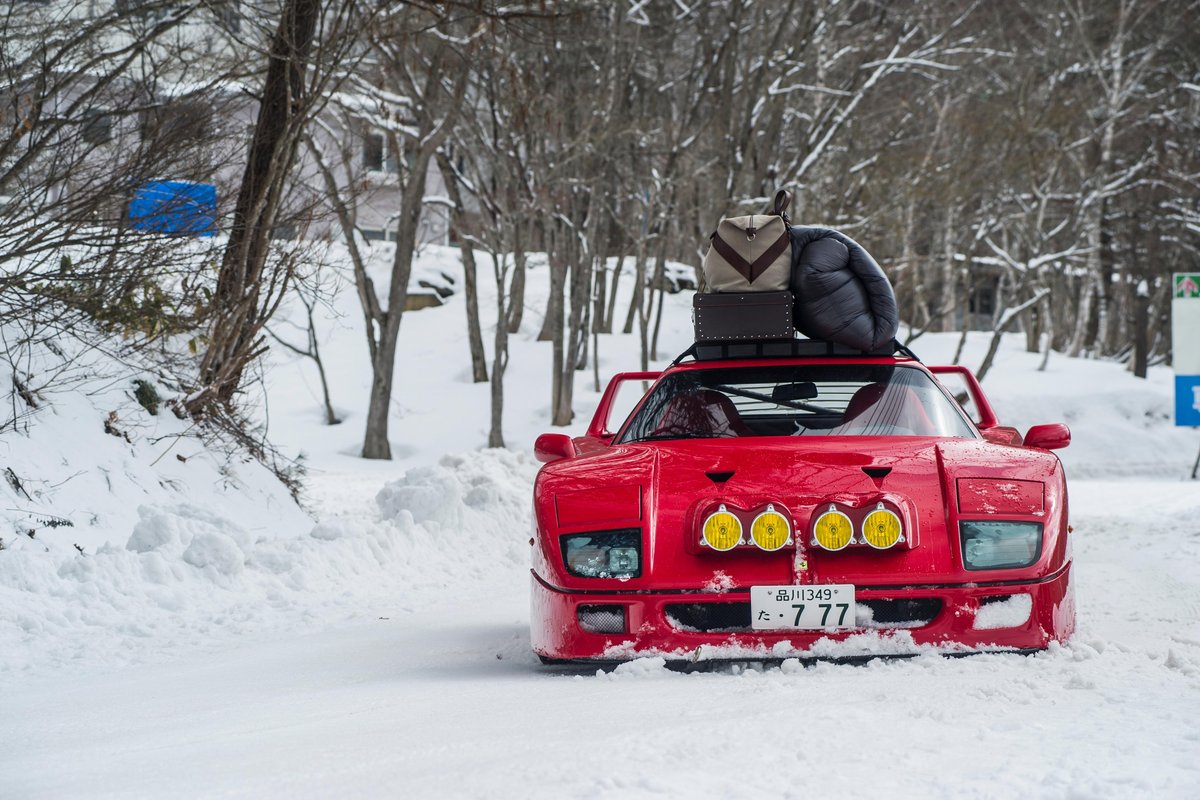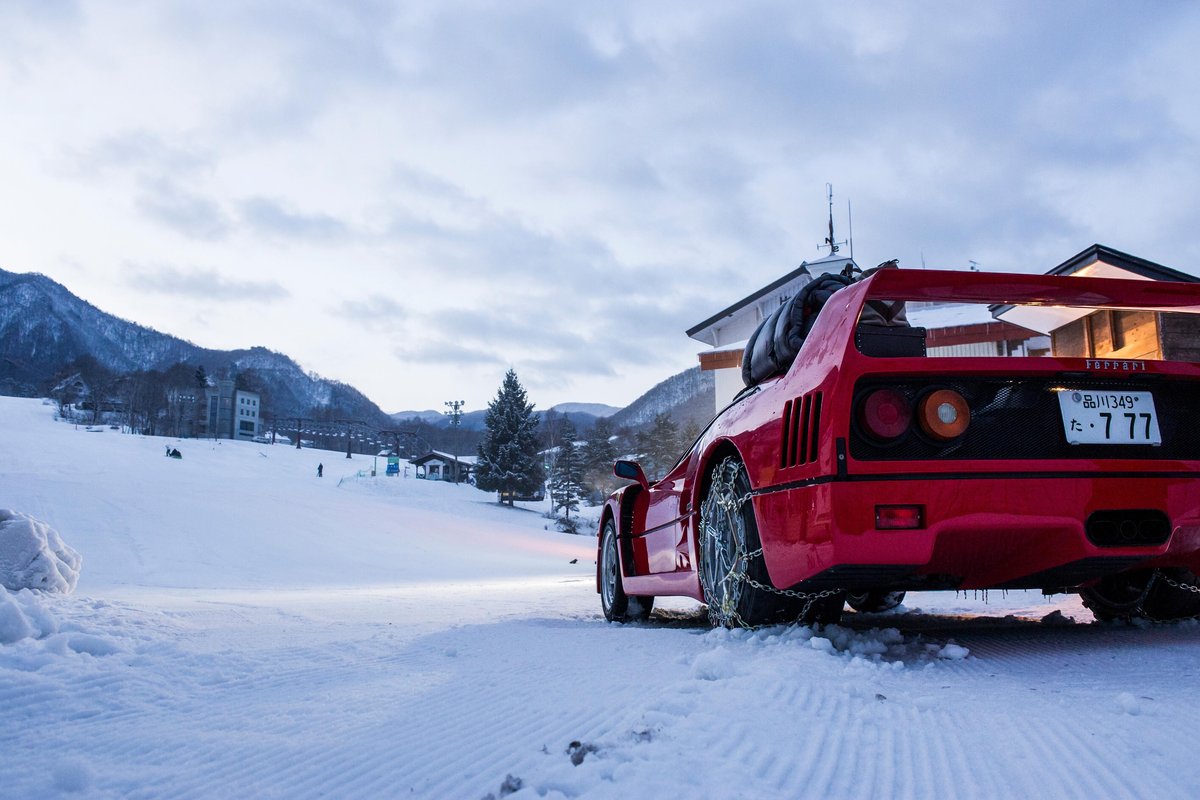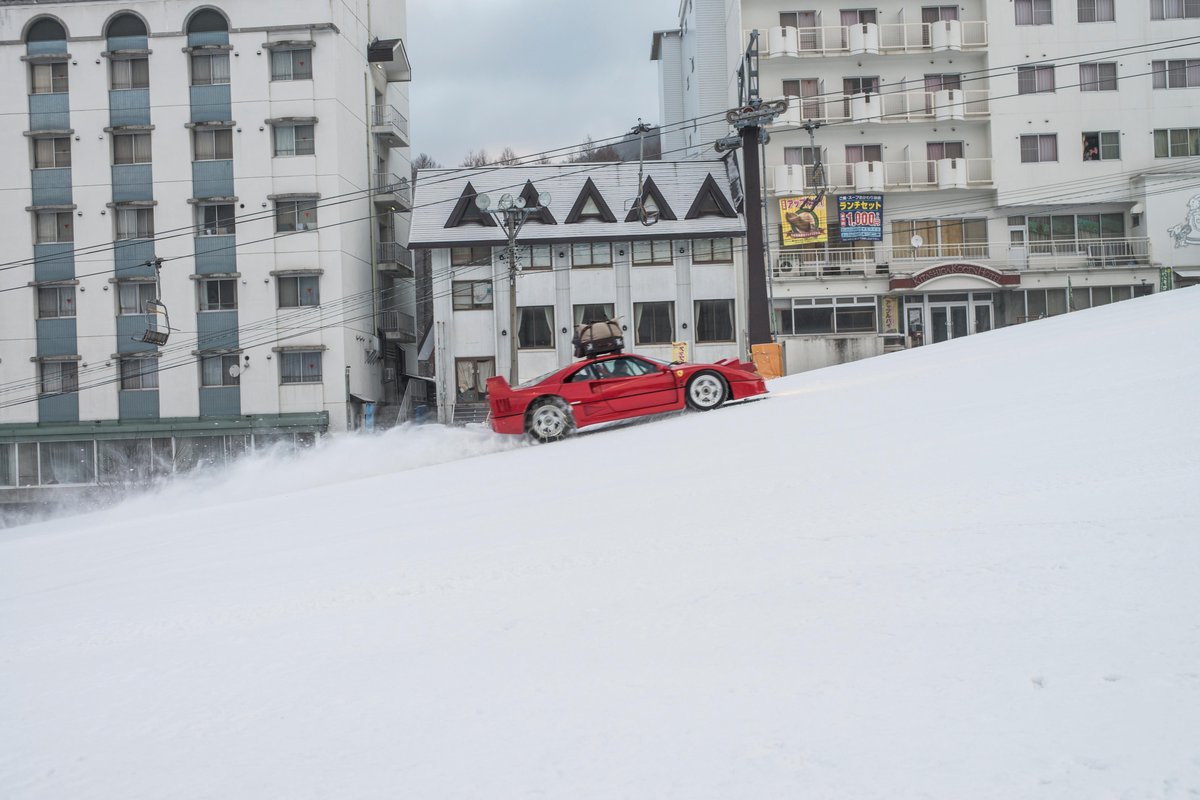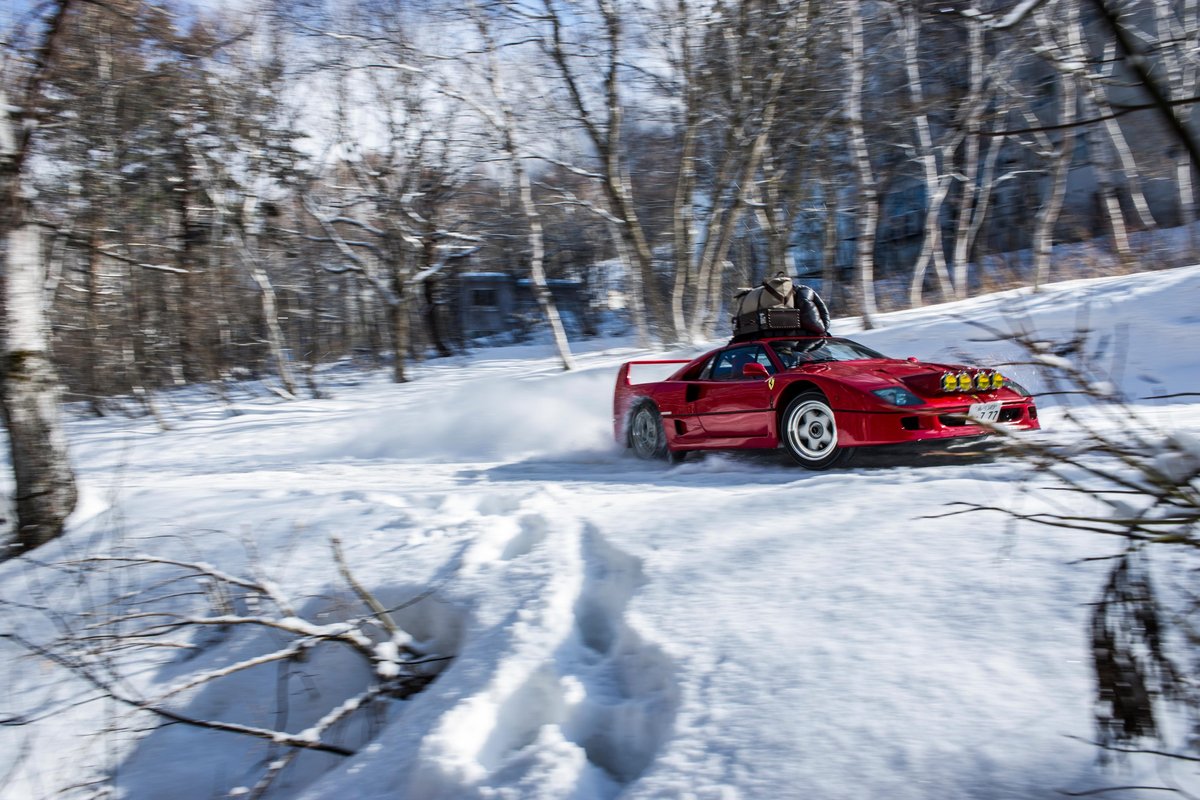Over the years, we’ve seen all sorts of strange and blasphemous things done with and to some of the world’s most iconic supercars. Not to be left out of the fun, Red Bull has released a video of a Ferrari F40, equipped with tire chains and rally-inspired lighting, tearing up a ski slope.
The clip starts off unassumingly enough: A gentleman prepares for the day (with a little slow motion camerawork) and proceeds to pack his gorgeous red Ferrari F40 with mystery gear. Is it unusual to strap things to the roof of an Italian exotic? Sure, but not quite irreverent. Just after the car ignites and we hear that twin-turbocharged V8 howl, your first indicator that something is amiss appears: those quad, center-mounted yellow headlights — pieces that belong on a Group B rally car, not a Ferrari.
As the F40 cruises along snow-lined roads, the driver starts to push the car a bit, and though it’s hard to tell whether there are winter tires beneath the flared wheel arches, icy roads and sports cars never seem to pair well. Either way, the bloke eventually arrives at the Ryuoo Ski Park in Japan. Instead of checking out boots, poles, and skis, though, the driver only signs off on a set of tire chains … now we see where this is going.
Without delay, the Ferrari (saddled in the aforementioned traction equipment) proceeds to attack the ski resort and its ski- and board-handling patrons. Drifting around corners and barreling up hills, the F40 appears strangely in its element. Day turns to night and the Ferrari is still terrorizing the mountain, though now with those rally lights to guide its path. Thankfully, those without 400 horsepower supercars have long since gone home, so the rear-wheel drive monster can prowl the snowy slopes in peace.
And when the driver has had his fill, he unloads the cargo, sets up a bonfire, and prepares a meal of ramen noodles and Red Bull.
Whoever dreamt up this stunt is either a genius or a criminal, but I still prefer it to the destructive carnage of some other supercar thumping videos by YouTubers like “Tax The Rich.”







